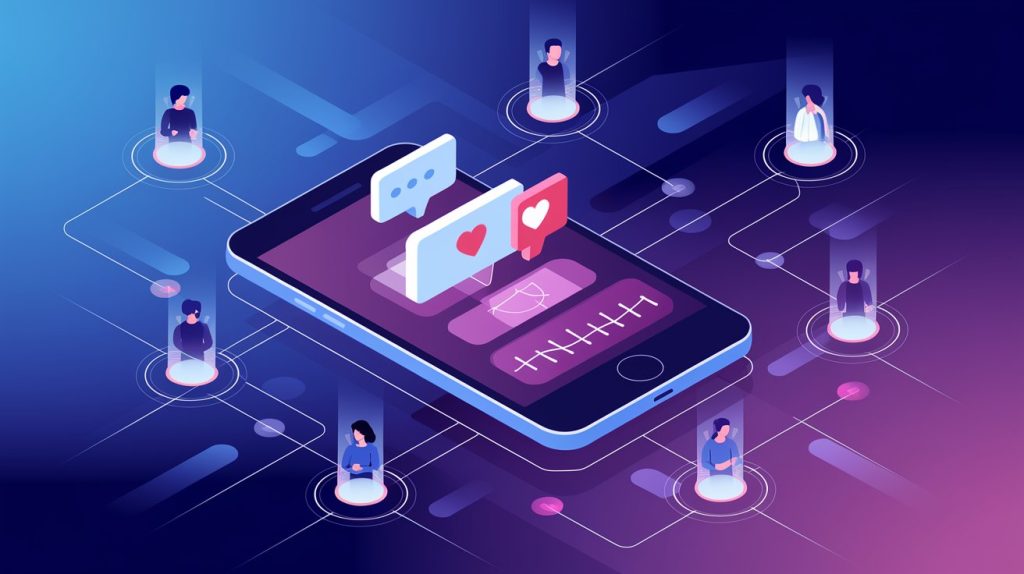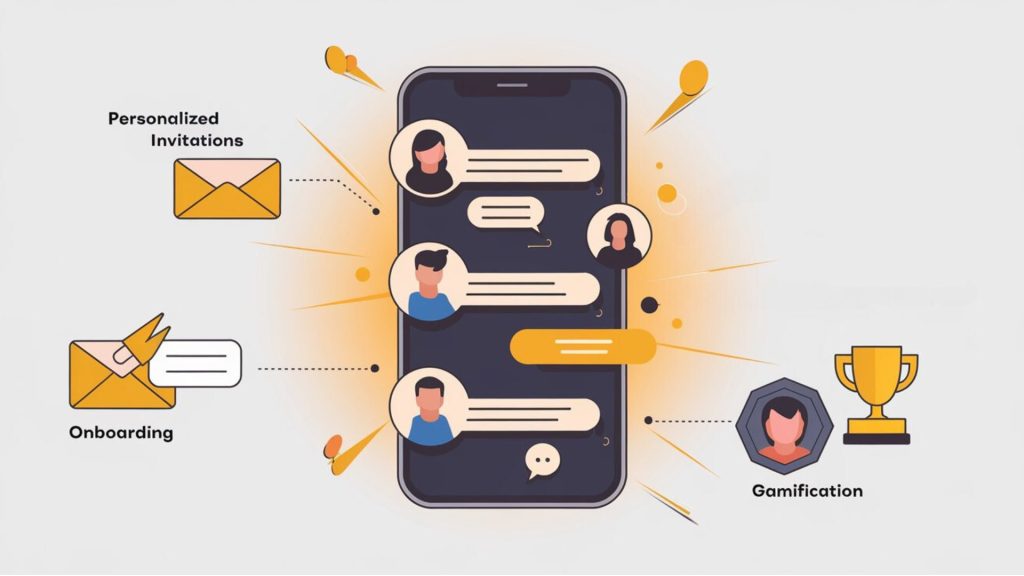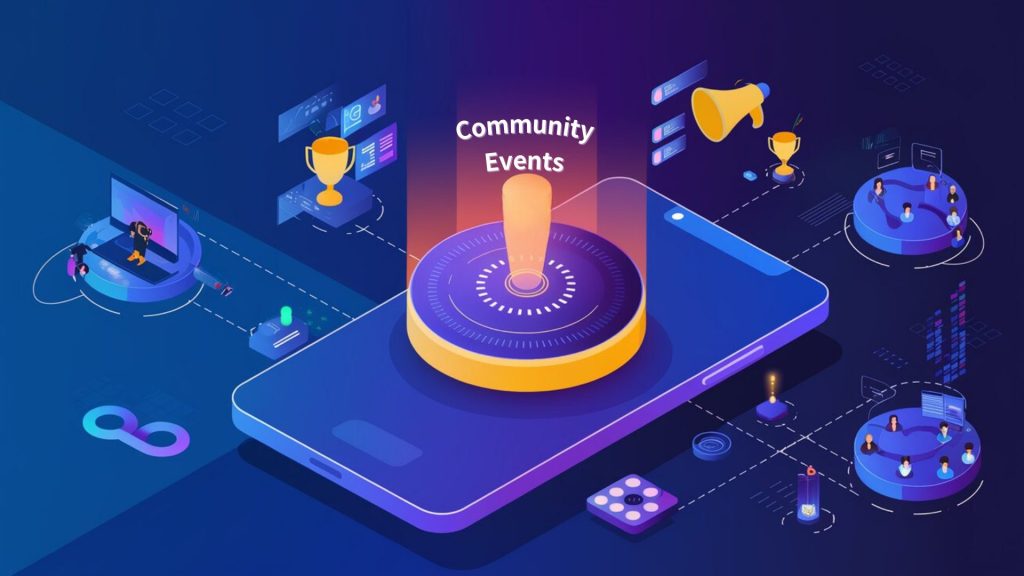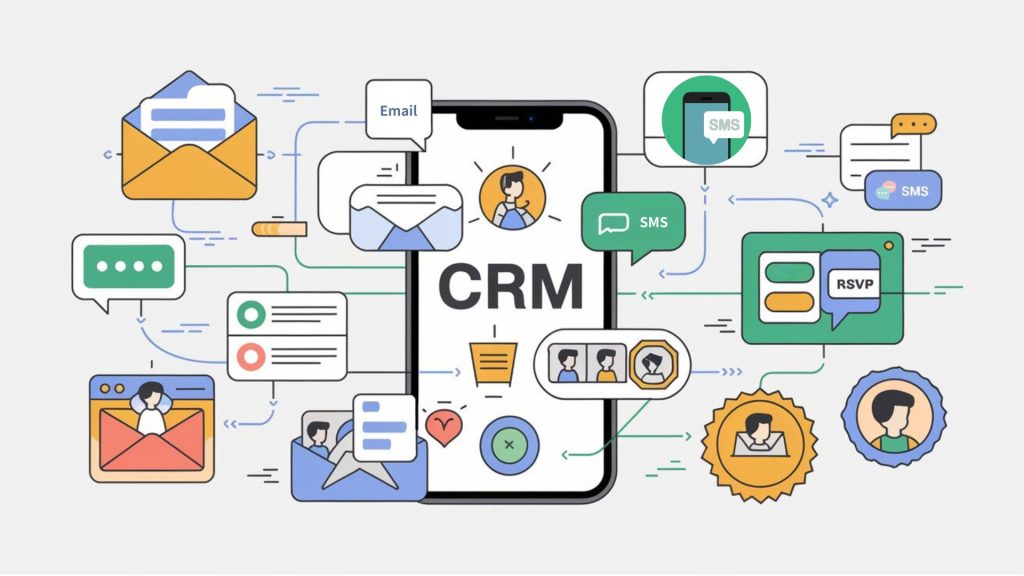In today’s competitive app landscape, in-app messages are essential tools for fostering community building and driving mobile engagement. A strong app community creates an environment where users feel valued, connected, and inspired to interact regularly. These communities amplify user retention and encourage deeper connections with your brand, turning casual users into loyal advocates.
This guide explores how in-app messages can be used effectively to solicit user feedback, promote forums or user groups, notify users about community events, and implement advanced strategies for CRM marketers. These tactics ensure a strong user base, long-term loyalty, and sustainable engagement.
The Importance of Community Building in Mobile Apps
A vibrant app community transforms users into active participants who feel personally connected to your app’s success. When supported by strategically placed in-app messages, these communities foster collaboration, shared experiences, and organic growth. For CRM marketers, leveraging community building through mobile engagement tactics drives long-term user retention and brand loyalty.
- Enhanced Engagement: Active communities encourage frequent app usage, as users return for social interactions, exclusive content, and collaboration.
- Improved Retention: Users who feel a sense of belonging are less likely to churn, reducing customer acquisition costs. Research shows that retaining existing users is up to five times cheaper than acquiring new ones (AppsFlyer, 2023).
- Valuable User Insights: Community interactions offer actionable data on user preferences, behaviors, and pain points, guiding app improvements (Adjust, 2022).
- Positive Brand Reputation: Active communities foster trust, advocacy, and word-of-mouth promotion, which are critical for long-term brand success.
By integrating in-app messaging with community-building efforts, CRM marketers can nurture these relationships and drive mobile engagement directly within the app environment.

Gathering User Feedback Using In-App Messages
The Importance of Feedback
Feedback isn’t just a tool for improving app features-it’s a cornerstone of community building. By leveraging in-app messages to gather user input, you demonstrate a commitment to meeting their needs, fostering trust and loyalty. This strategy directly impacts mobile engagement, as users who feel heard are more likely to stay engaged and participate in app communities.
Effective Strategies
- Time It Right
Timing is crucial for soliciting feedback. Messages sent at the right moment achieve significantly higher response rates. For example:- A fitness app can ask, “How was your workout today? Share your experience!” immediately after a session.
- A shopping app can prompt, “Rate your checkout experience!” post-purchase.
- Simplify the Process
Keep surveys concise and intuitive. Use one-click options like star ratings, thumbs-up icons, or emoji-based responses to make participation easy. Shorter surveys have a 25-50% higher completion rate (Helpshift, 2022). - Incentivize Engagement
Encourage feedback by offering rewards such as discount codes, loyalty points, or exclusive in-app badges. Gamifying the process can also make it fun and interactive. - Close the Loop
Users appreciate seeing the impact of their feedback. An in-app message like, “You spoke, we listened: We’ve added [requested feature]!” strengthens trust and shows your commitment to improvement.
Advanced Techniques for CRM Marketers
Using sentiment analysis tools can identify recurring themes and emotional trends in user responses. For example, understanding why users find certain features frustrating can guide future updates, while positive feedback highlights strengths to emphasize in marketing campaigns.
Promoting Forums and User Groups

The Role of Forums
Forums and user groups act as the backbone of in-app communities. They encourage peer-to-peer interaction, create a sense of belonging, and enable users to share knowledge and insights.
Proven Strategies for Success
- Send Personalized Invitations
Use behavioral and demographic data to invite users to relevant forums or groups. For example:- A language-learning app could send, “Join our French Learners’ Forum to practice and connect with peers!”
- A parenting app might recommend a “New Parents Group” to users based on their profile details.
- Highlight Benefits
Clearly communicate the value of joining. Example: “Connect with like-minded users and get exclusive tips in our Beta Tester Forum!” - Welcome and Guide New Members
Once users join, send onboarding messages with tips for participation, links to trending discussions, or community guidelines. This ensures they feel included from the start. - Gamify Engagement
Create badges, leaderboards, or rewards for active participants to motivate users to contribute regularly.
Examples of Success
- Health and Wellness Apps: Community-building features have significantly enhanced user engagement in health apps. For instance, MyFitnessPal offers an Activity Feed where users can share updates, celebrate successes, and interact within a supportive environment. This fosters a sense of community and motivates users to maintain their health journeys (MyFitnessPal, n.d.).
- Gaming Apps: Gamification has proven to be a game-changer in the app industry. Duolingo, a language-learning app, leverages features such as streak counts, leaderboards, and rewards to keep users motivated and returning daily (StriveCloud, 2024). In the fitness space, Strava combines competition with community by allowing users to participate in challenges, compete on segments, and earn badges, effectively fostering user loyalty and consistent activity (CitrusBits, n.d.).
Notifying Users About Community Events
Why Events Matter
Community events, whether virtual or in-person, offer opportunities for users to connect on a deeper level. These events can include live Q&A sessions, webinars, competitions, or product launches.

Best Practices for Event Messaging
- Make It Visual
Use banners, GIFs, or short videos in your event notifications to capture attention. Example: “Join our live Q&A with [Expert Name] this Friday!” - Incorporate Urgency
Add countdown timers or phrases like, “Only 50 spots left!” to create urgency and prompt immediate action. - Segment Audiences
Target event invitations to specific user groups. For instance, frequent buyers could receive an invite to a VIP shopping event, while gaming app users might be invited to a new feature launch. - Send Timely Reminders
Schedule multiple reminders-one week, one day, and one hour before the event-to ensure users don’t miss out.
Advanced Strategies for CRM Marketers
- Multi-Channel Campaigns
Integrate in-app messaging with other channels like email, push notifications, and SMS. For instance, announce events via email and follow up with in-app reminders closer to the date. - Behavioral Triggers
Automate messages based on user activity. For example:- Suggesting a workout group to fitness enthusiasts who log multiple sessions per week.
- Sending follow-ups after event RSVPs with preparation materials like schedules or FAQs.
- A/B Testing
Test variations in message content, visuals, and CTAs to find what resonates most. Example: Compare “Join Now!” versus “Learn More” to identify the more effective call-to-action. - Encourage User-Generated Content
Foster authentic engagement with campaigns like photo contests. For instance, a fitness app could ask users to share workout progress photos in exchange for rewards or recognition. - Gamification
Boost participation with interactive elements like challenges, leaderboards, and badges. Gamification not only drives mobile engagement but also builds community pride.

Measuring Community-Building Success
To continuously improve community-building efforts, monitor these KPIs:
- Engagement Metrics: Open and click-through rates of in-app messages.
- Community Growth: Membership increases in forums or event participation rates.
- Retention Rates: Compare user retention between active and inactive community members.
- Sentiment Analysis: Monitor feedback trends to gauge satisfaction.
- Revenue Impact: Track how community-driven engagement translates into monetization, such as higher subscription renewals or in-app purchases.
Conclusion
In-app messages are powerful tools for community building and driving mobile engagement. By gathering user feedback, promoting forums, and notifying users about events, CRM marketers can create thriving app ecosystems that foster loyalty, retention, and advocacy. With a thoughtful strategy, the potential for building vibrant app communities—and achieving long-term success—is limitless.
FAQ
